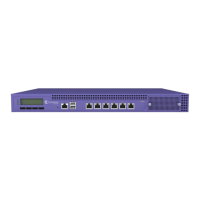Table 51: Network Service Configuration Settings (continued)
Field Description
MAC-based Authentication The following parameter appears when MAC-based Authentication is
enabled:
•
MBA Timeout Role. Select the role that will be assigned to a
wireless client during MAC-based authentication (MBA) if the
RADIUS server access request times out. If no MBA Timeout Role is
selected, then a RADIUS server timeout is treated like an Access-
Reject, which prevents the client from accessing the network.
Select the plus sign to create a new role.
Authentication Method Select from the following authentication values:
•
Default. Click Configure Default AAA.
•
RADIUS. Look up on a remote RADIUS Server. This option enables
the primary and backup RADIUS fields.
•
Local. Look up in the local password repository.
•
LDAP. Look up on a remote LDAP server. This option enables LDAP
Configuration.
Default AAA Authentication Method Indicates the default authentication method that is configured when
you select Configure Default AAA.
Primary RADIUS IP address of primary RADIUS server.
Backup RADIUS IP address of backup RADIUS server.
LDAP Configuration Lightweight Directory Access Protocol. Select a configuration or select
the plus sign to add a new configuration.
Authenticate Locally for MAC Authenticate the MAC address on ExtremeCloud Appliance. Do not
authenticate MAC address on the RADIUS server.
Default Auth Role The default network policy roles for an authenticated client. Select the
plus sign to create a new role.
Configure this setting if you want to override the default accept policy
role with your own default authentication policy role. By default,
Enterprise User is the Default Auth Role.
To configure a dierent role as the Default Auth Role:
1 Configure the role under Configure > Policy > Roles and indicate
that it is the Default Auth Role here.
2 Go to Onboard > Rules and edit a policy rule, specifying Default
Auth Role in the Accept Policy field.
Default VLAN The default network topology. A topology can be thought of as a
VLAN (Virtual LAN) with at least one egress port, and optionally
include: sets of services, exception filters, and multicast filters.
Examples of supported topology modes are Bridged at AP and
Bridged at AC. Click the plus sign to create a new VLAN.
Related Links
Captive Portal Settings on page 122
LDAP Configurations on page 149
Adding Policy Roles on page 128
Configuring VLANS on page 137
Configure
ExtremeCloud Appliance User Guide for version 4.36.03 120

